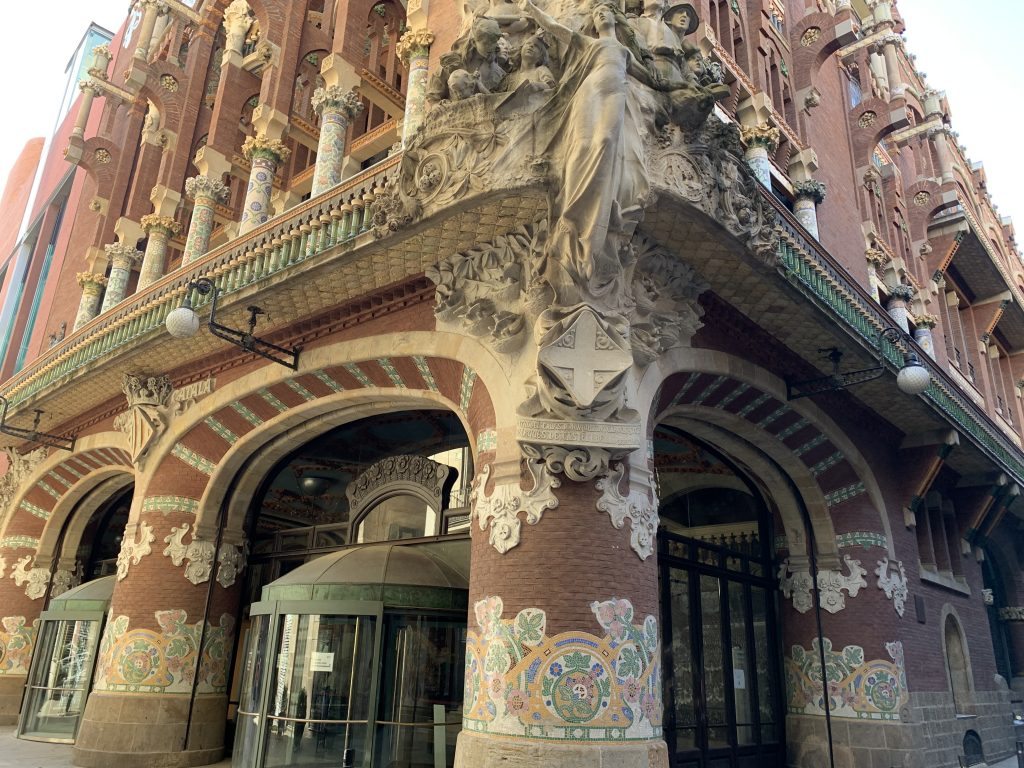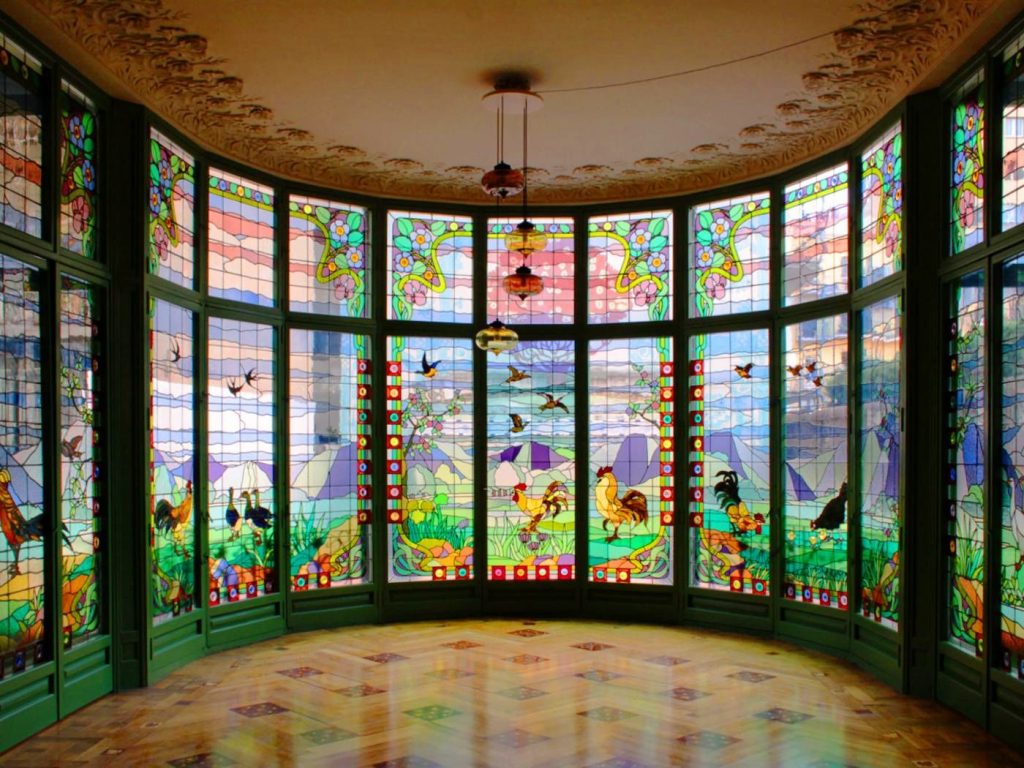Between the end of the 19th century and the start of the 20th century, Modernism style ( Liberty style or Art Nouveau style) transformed the city of Barcelona. It was the time of the industrial revolution and economic recovery in Catalonia.
The reach families were eager to custom design new homes, signing up famous architects. Nothing missed: neither money, nor talent architectures and craftsmen. Something you see only in Barcelona is that all the facades are different, you can’t find any two houses that are alike.
Saint Paul’s Hospital, the Palau de la Música de Catalana, Casa Lleó i Morera ( three wonderful jewels of the architect Luis Domenic i Montaner ), the Arc de Triomphe, Casa Amatller, Els Quatre Gats café, the Boqueria market…. are just a few examples of the long list of modernist masterpieces you can visit in Barcelona.


Saint Paul’s Hospital in Barcelona
This masterpiece of Catalan Art Nouveau was built between 1902 and 1930.
This city within a city was created by the eminent Catalan architect Luis Domenic i Montaner, father of the Art Nouveau or Modernist style in Catalonia, who headed the Barcelona School of Architecture for 20 years.

History of the construction
At the end of the 19th century, Barcelona was in great need of a modern hospital. Lius Domenic i Montaner, after several study trips to Europe, drew up a project that exceeded the requirements of the best hospitals of the time. He imagined a complex of 48 specialized pavilions, including a surgical department, connected by an underground network. The tunnels of this network formed the arteries of a system in which equipment, personnel and patients circulated. In the surgical pavilion, operations were performed until the 1960s. It was here that the first heart transplant was performed in Spain.
Beauty will save the world
The most important idea of the project is to heal, not only through treatments, operations and medical gestures, but also and above all through beauty, light and color. The central avenue of the complex was planted with chestnut, lime and orange trees. Some 145 square meters, including gardens and herbal plantings, were provided for each patient.
All buildings are made of red brick. The exterior and interior walls are decorated with many colorful mosaics and ceramics. The ceramic tiles, easy to clean, had the added advantage of perfectly meeting the criteria of hygiene and health standards. The facade of the administration building looks like a monument – an altarpiece. The numerous sculptures are the work of Pablo Gargayo and Eusebi Arnau, the best Catalan masters of the time.
Charity
Without a benefactor, the hospital would never have been built, let alone become an architectural masterpiece. The Catalan banker and philanthropist Pau Gilles, who lived in Paris, bequeathed half of his fortune for its construction. In the large central foyer of the administration pavilion, the semi-circular arches remind us of the patrons to whom the hospital is indebted. The mosaics represent the coats of arms of Barcelona and Paris, as well as the Lion, the emblem of Mr. Gilles’ bank. Underneath, we can read the inscription: “Happiness in honesty”. Later, wealthy local families supported the project and made donations, which allowed the construction to be completed. The hospital was inaugurated in 1930. King Alfonso XIII of Spain, struck by the beauty of the place, declared: “You Catalans are like that… you build palace-hospitals for the poor, and a small building for the king…”, referring to his Albéniz Palace in Barcelona.
San Pau today
In 1997, the hospital complex was declared a UNESCO World Heritage Site. The restored pavilions of the modernist complex have been adapted to house research laboratories and conferences and to welcome visitors. It also houses one of the world’s richest hospital archives. A museum is to be built to showcase this treasure trove of medical history.
The hospital itself, after nearly 80 years of operation, has moved to new modern purpose-built buildings.
The guided tours of Saint Paul’s Hospital and the Palau de la Musica are a must on any visit to Barcelona.
With your accredited guide you will avoid queues at the entrance !